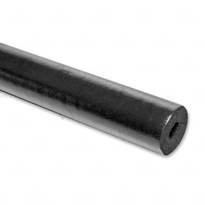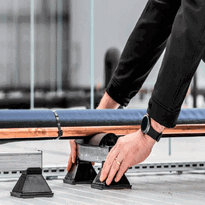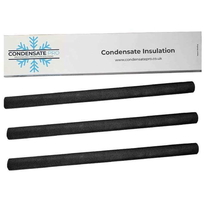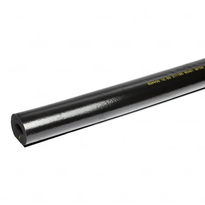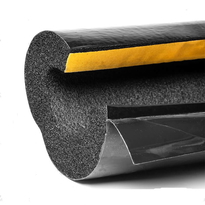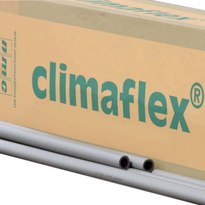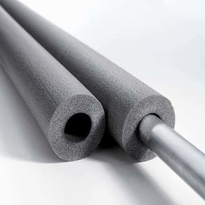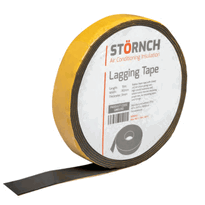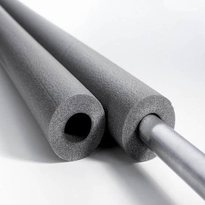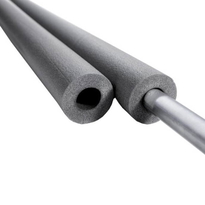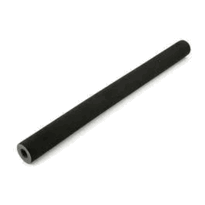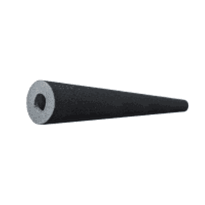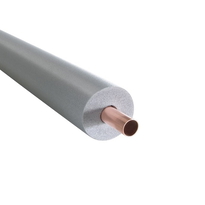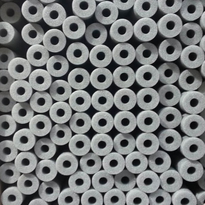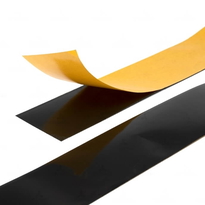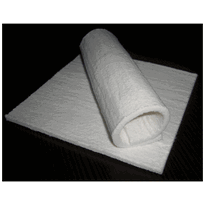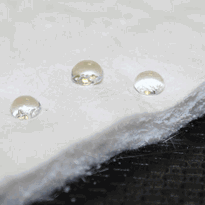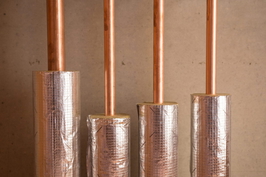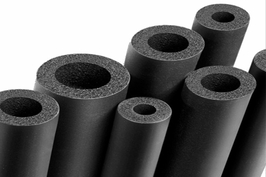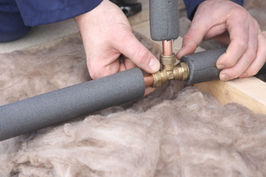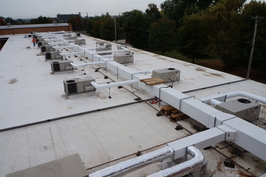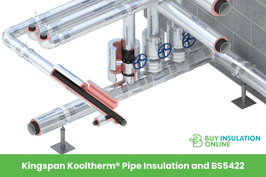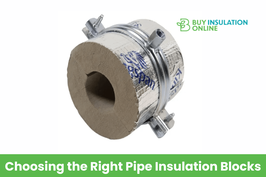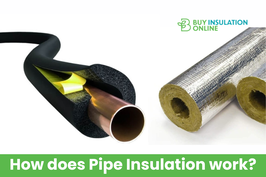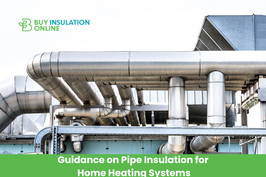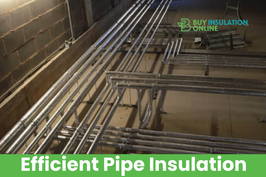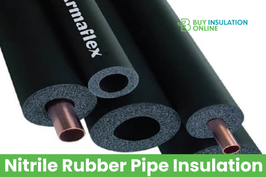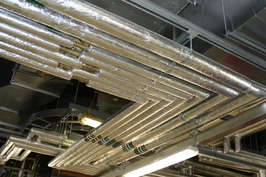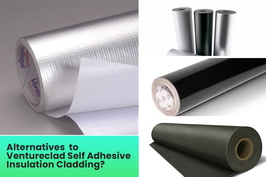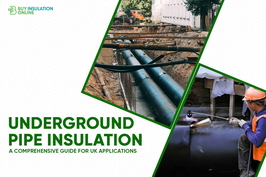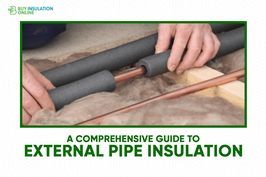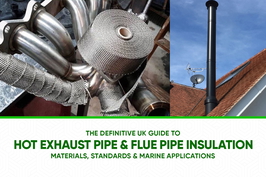Outdoor Water Pipe Insulation
Outdoor water pipe insulation is essential for safeguarding pipes against freezing temperatures, minimising heat loss, and preventing potential damage or expensive repairs. Common materials utilised include foam, rubber, and fiberglass, each providing durability and effective moisture resistance.
The appropriate thickness of insulation depends on the size of the pipe and the local climate. Thicker insulation is particularly beneficial in colder regions, where the risk of freezing is higher.
For optimal performance, proper installation is crucial. Additionally, ensuring adequate weather protection and maintaining the insulation will significantly extend its effectiveness.
By understanding how to select, install, and care for outdoor water pipe insulation, homeowners can ensure their plumbing systems remain protected throughout the winter months.
Types of Outdoor Water Pipe Insulation Materials
Outdoor water pipe insulation is available in various materials, each specifically designed to safeguard pipes from heat loss, freezing, and weather-related damage.
Mineral wool and glass wool insulation are created from inorganic mineral fibres bonded with binders. These include variants such as rock wool and slag wool, which are particularly suitable for high-temperature industrial applications due to their excellent fire resistance and thermal insulation properties.
Glass wool, which comprises glass fibres, is also effective for both thermal and acoustic insulation, showcasing its versatility.
Flexible elastomeric foam insulation, constructed from closed-cell rubber like NBR or EPDM, is noteworthy for its flexibility and water vapour resistance. This type of insulation effectively prevents surface condensation, making it especially beneficial for outdoor use.
Polyurethane and polyisocyanurate insulations provide superior thermal performance and moisture resistance, making them ideal for refrigeration and challenging environments.
Finally, polyethylene and polystyrene are lightweight alternatives that perform well in damp or variable climates, offering good moisture resistance and durability.
Selecting the Right Insulation Thickness for External Pipes
Choosing the appropriate insulation thickness for external pipes is crucial and depends on several factors, including the pipe size, operating temperature, and environmental conditions.
For smaller pipes under an inch, approximately an inch of insulation is generally recommended for hot water applications. High-pressure steam lines may require significantly more insulation to ensure efficiency and safety.
Larger pipes, typically ranging from two and a half to four inches, often need around three inches of insulation, especially for high temperature or pressure systems.
When it comes to pipes exceeding five inches, the insulation thickness can vary from one and a half to three and a half inches, influenced by temperature and system demands.
Outdoor pipes are particularly vulnerable to weather conditions and the risk of freezing. Therefore, it's advisable to utilise thicker insulation or protective coverings to prevent freezing and potential damage.
Balancing the right level of insulation thickness is essential for effective heat retention while avoiding excessive costs, ultimately contributing to a safer and more reliable outdoor piping system. Proper insulation selection depends on understanding climate effects.
Key Materials Used in Outdoor Pipe Insulation
Various materials are utilised for outdoor pipe insulation, each offering distinct advantages tailored to specific requirements. Mineral and glass wool insulation endure high temperatures and provide excellent fire resistance, making them ideal for industrial pipework and applications prioritising safety. They are non-combustible, ensuring safety in environments exposed to high heat or flames. Flexible elastomeric foam, crafted from closed-cell rubber, offers remarkable flexibility, moisture resistance, and durability, making it particularly suitable for outdoor and damp environments. Polyethylene and polyethylene-based insulation are lightweight, flexible, and easy to handle, making them appropriate for residential or light commercial use in moderate conditions. Lastly, polyurethane and polyisocyanurate insulation deliver superior thermal protection and moisture resistance, frequently employed in refrigeration or high-temperature piping. Each material caters to diverse user needs, whether prioritising safety, durability, or ease of installation, fostering a sense of belonging in shared infrastructure solutions.
Performance Traits of Different Insulation Options
Different insulation materials exhibit varying degrees of effectiveness in resisting heat transfer and enduring outdoor conditions.
Foam insulations are well-regarded for their energy-saving properties, but they may require additional protection from moisture to maintain their integrity. They are also prone to UV damage if not properly covered.
In contrast, rubber insulation provides exceptional durability and moisture resistance, making it suitable for harsh environments.
When selecting the right insulation option, it's crucial to consider a balance between thermal performance, durability, and resistance to weather elements.
This careful consideration will ensure optimal energy efficiency and long-lasting protection for your property.
Thermal Resistance Differences
Thermal resistance is crucial in determining the efficacy of various pipe insulation materials in preventing heat transfer. Materials such as fiberglass and mineral wool generally possess high R-values, making them highly effective for maintaining temperature, particularly for hot water pipes.
Elastomeric rubber demonstrates strong resistance in outdoor conditions, adapting well to fluctuations in temperature. Conversely, polyethylene offers lower thermal resistance, which makes it more suitable for cold pipes, yet less effective in hotter environments.
Understanding these distinctions is essential for selecting the appropriate insulation for specific requirements, ensuring both energy efficiency and pipe safety.
Consider the following points:
Choose materials with high R-values to maximise heat retention.
Thicker insulation enhances thermal resistance.
The choice of material significantly impacts performance across different conditions.
Proper selection is key to preventing heat loss and conserving energy.
Durability and Resistance
Durability and resistance are crucial factors when selecting outdoor pipe insulation, as these attributes influence how well the materials perform over time in challenging environmental conditions.
Foam insulation can provide long-lasting protection with proper care, often lasting for decades. Rubber insulation is exceptionally durable, resisting physical damage and weathering, which makes it an excellent choice for outdoor applications. Flexible elastomeric closed-cell foam pipe insulation is commonly referred to as rubber and offers excellent resilience against environmental stressors. Elastomeric nitrile rubber is particularly notable for its flexibility and strength, effectively coping with temperature fluctuations and outdoor stresses. Closed-cell rubber offers superior moisture resistance compared to foam, which helps reduce the risk of mould and extends the lifespan of the insulation. In contrast, fiberglass tends to be less durable for outdoor use and may degrade if exposed to moisture and harsh weather conditions over time.
Factors to Consider During Insulation Installation
When installing outdoor pipe insulation, it's essential to ensure that the material is compatible with the pipe’s condition and type to avoid any potential damage. Selecting the appropriate thickness is crucial for effective thermal protection, particularly in varying weather conditions. Proper insulation thickness can significantly influence energy savings and the prevention of freezing. Furthermore, implementing weather protection measures, such as UV-resistant covers or seals, aids in maintaining the insulation's performance and extending its lifespan. Taking these factors into consideration will help ensure that the insulation not only performs well but also provides long-lasting protection for your piping systems.
Material Compatibility and Condition
Choosing the right insulation material for outdoor water pipes necessitates careful consideration of how the material interacts with the pipe’s composition and the surrounding environmental conditions. Various pipe types, such as copper, PVC, or steel, respond differently to insulation materials.
For instance, foam insulations like polyethylene and rubber are generally compatible with many outdoor pipes and can help prevent corrosion. Fibreglass is suitable for metal pipes but requires a protective outer layer when used outdoors. Polyurethane foam retains its shape and is resistant to moisture, making it an excellent choice for chilled water pipes.
Always adhere to manufacturers’ guidelines to ensure the integrity of the pipes.
It is crucial to ensure that the insulation:
Is compatible with the pipe material to prevent any chemical damage.
Can endure UV rays and harsh weather conditions.
Withstands physical impacts and abrasion.
Resists moisture and chemical exposure, ensuring long-term durability.
has a proper moisture barrier to prevent water infiltration and mold growth.
Proper Thickness Selection
Selecting the appropriate thickness of insulation for outdoor water pipes involves considering several practical factors to ensure effective thermal protection. Pipe size and diameter are crucial; larger pipes require thicker insulation to provide adequate heat resistance. For instance, smaller pipes typically necessitate around 1 inch of insulation, while larger pipes may need between 1.5 to 2 inches. The operating temperature is also significant—hot pipes generally require thicker insulation to prevent heat loss and maintain safety. Furthermore, the thermal conductivity of the insulation material influences thickness choices; high-quality insulators allow for thinner layers while still delivering the same performance. Lastly, adhering to energy efficiency standards ensures that the insulation offers suitable protection while contributing to energy conservation and cost reduction. Proper insulation thickness can also help prevent condensation or freezing issues, which are common concerns for outdoor water pipes in various climates.
Weather Protection Measures
Proper weather protection measures are essential during insulation installation to ensure long-lasting effectiveness. Without appropriate steps, insulation can fail and leave pipes vulnerable to damage.
When selecting materials, consider their suitability for local weather conditions. Options like polyethylene or rubber foam sleeves offer flexibility and water resistance.
Fully covering exposed pipes and fittings with self-sealing insulation prevents cold air from seeping in. Securing insulation tightly helps avoid displacement caused by wind or snow, maintaining optimal protection.
Additional wraps around elbows and joints provide an extra barrier against cold infiltration.
Finally, preventing water ingress by sealing seams with waterproof tapes or vapour barriers preserves the performance of insulation. These measures create a reliable shield, adapting effectively to different weather patterns and ensuring pipes remain protected through every change in weather, fostering a sense of security and belonging in both community and home environments.
Advantages of Proper Outdoor Pipe Insulation
Proper outdoor pipe insulation provides numerous significant advantages that can enhance the efficiency and durability of plumbing systems. It aids in reducing heat loss, which can lead to savings on heating energy costs, while also extending the lifespan of water heaters by decreasing their workload. Insulation is crucial in preventing pipes from freezing during colder months, thereby avoiding expensive repairs.
Moreover, it helps maintain optimal water temperatures, reduces water wastage, and improves overall system performance. The insulation also minimises noise caused by pipe vibrations and expansion, creating a more comfortable living environment. Additionally, it plays a vital role in preventing condensation, which can lead to water damage and mould growth.
The table below summarises these key benefits:
Benefit |
Effect |
| Energy Savings | Reduces heating costs |
| Freeze Protection | Prevents pipe bursts |
| Heat Retention | Enhances system efficiency |
| Noise Reduction | Increases comfort |
| Moisture Control | Limits condensation and water damage |
Protective Measures for Insulation Against Weather Elements
To safeguard outdoor pipe insulation against the elements, it's crucial to utilise weather-resistant coverings that effectively block moisture and prevent damage.
These coverings provide practical solutions to maintain insulation performance in adverse conditions.
Applying weather-resistant laminate tape with pressure-sensitive adhesive ensures that seams and joints remain sealed, keeping water at bay.
Conical rain shields made from aluminium jacket material can be fitted around pipe hangers to deflect rainwater and minimise penetration points.
Proper maintenance of rain shields significantly reduces moisture damage, thereby extending the lifespan of insulation.
Protective jackets over insulation serve to keep water, debris, and wind away from pipes, ensuring they remain secure even during storms.
Implementing these measures instils a sense of security, knowing that pipes are well protected from unpredictable weather while contributing to the comfort of a reliably warm home.
Cost-Effective Strategies for Insulating Outdoor Water Pipes
Insulating outdoor water pipes can be both affordable and straightforward, especially when employing effective strategies. Foam tubing insulation is a popular choice due to its low cost and ease of installation. It's available in various thicknesses, with the thicker options providing better protection in colder climates. The pre-slit design allows it to easily slip over pipes without the need for disassembly, making it ideal for DIY projects.
To install, simply cut the foam to the desired length, fit it around bends, and secure it with tape at regular intervals.
For longer pipe sections, fibreglass insulation can be repurposed from attic materials, offering a cost-effective alternative. However, it's important to ensure it's adequately protected from weather exposure.
Insulation tapes and wraps also present budget-friendly and flexible solutions for covering hard-to-reach or irregular pipe areas. By utilising these materials, you can effectively minimise the risk of freezing and ensure your outdoor water pipes remain well-insulated throughout the colder months.
Tips for Maintaining and Assessing Insulation Effectiveness
Regularly assessing the condition of outdoor water pipe insulation is crucial in preventing costly damage and ensuring it remains effective throughout the colder months.
Begin by inspecting the insulation for any cracks, gaps, or tears that could allow cold air to infiltrate, thereby reducing the insulation's efficiency.
Pay particular attention to joints and bends where the insulation may have shifted or become compressed over time.
It is also important to look for wet or damp spots, as these can lead to freeze damage or even mould growth if not promptly addressed.
Additionally, monitor for signs of damage from pests or UV exposure, which can compromise the integrity of the insulation material.
In conjunction with these visual checks, using an infrared thermometer to measure pipe temperatures can help identify cold spots that indicate heat loss.
Regular maintenance, swift repairs, and proper installation are vital in protecting pipes and preserving insulation effectiveness.
This ensures that everyone in the community remains connected and safe during the winter months.
Conclusion
Proper outdoor water pipe insulation is essential for protecting pipes from freezing and weather-related damage, ultimately saving energy and reducing repair expenses. Selecting appropriate materials and thickness is crucial to ensure effective insulation performance.
Regular maintenance and weatherproofing can significantly extend the lifespan of your insulation and maintain its effectiveness. By making informed choices regarding installation and materials, homeowners can proactively prevent pipe issues and enhance system efficiency.
Overall, investing in high-quality insulation is a practical measure for ensuring long-term protection and reliability of your water pipes. Prioritising insulation not only safeguards your plumbing but also contributes to overall energy efficiency in your home.
